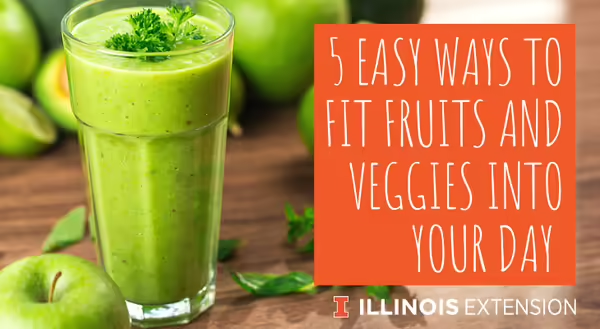
The 2015–2020 Dietary Guidelines for Americans recommends that adults consume 1.5–2 cups of fruits and 2–3 cups of vegetables per day. Despite these recommendations, recent data show low consumption. Only 1 in 10 US adults eat the recommended amount of fruits or vegetables each day. This number is even lower among American youth.
Most people know that eating fruits and vegetables is important for good health, but most of us still aren’t hitting the mark. This September, let's all make an effort to include more of these nutritional powerhouses into our diets during "Fruits & Veggies – More Matters Month".
Eating a healthy diet with plenty of vegetables and fruits can help you:
- Lower your risk for heart disease and some types of cancer
- Maintain or reach a healthy weight
- Keep your body strong and active
- Keep you feeling full with fiber
- Add color and important phytonutrients to your meal
Some ideas to help you and your family fit more fruits and vegetables into your day:
- Plan and cook smart- Prepare and freeze vegetable soups, stews, or other dishes in advance. This saves time and money. Add leftover vegetables to casseroles or blend them to make soup. Overripe fruit is great for smoothies and replacing some of the fat when baking.
- Fill half your plate with fruits and vegetables- Make fruits and veggies the focal point of every meal which means more vitamins, minerals, fiber, and phytonutrients to fuel your active lifestyle and protect against disease.
- Make it convenient- Keep a bowl of fruit handy where the whole family can see it. Research shows that the food on your counter can predict your weight. It boils down to the “See-Food Diet”- you eat what you see! Cut up fruits and veggies ahead of time so they’re ready for quick, healthy snacks.
- Celebrate the season- Use fresh vegetables and fruits that are in season. They are easy to get, have more flavor, and are usually less expensive. Your local farmer’s market is a great source of seasonal produce.
- Try canned and frozen options- Compare the price and the number of servings from fresh, canned, and frozen forms of the same veggie or fruit. Canned and frozen items may be less expensive than fresh. For canned items, choose fruit canned in 100% fruit juice and vegetables with “low sodium” or “no salt added” on the label.
Trying to eat more fruits and veggies? It’s helpful to know what counts as a serving size! Check out this infographic from the American Heart Association to learn about serving sizes for fruits and vegetables. https://bit.ly/30hzBE4